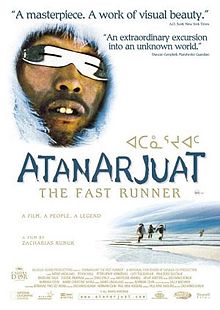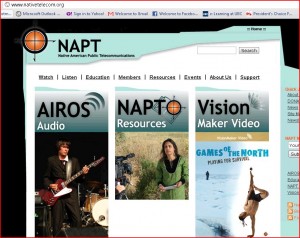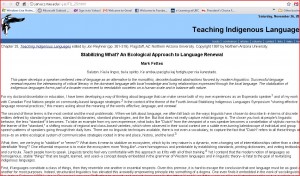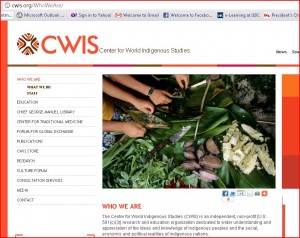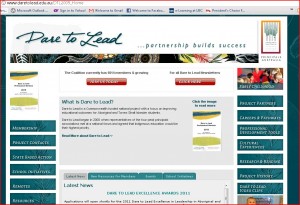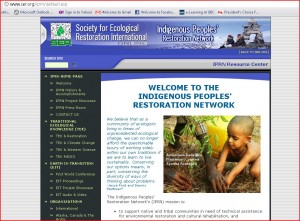It has come up repeatedly in our discussions that we need to stop thinking about the First Nations culture just as a static artefact from the past and need to look at their existing culture as well. So to remediate this I ventured on the Web to look for sources that would introduce me to the present day culture of the First Nations people. I examined sites that were reaching to the aboriginal people through the arts. I looked for traditional art and dance; contemporary and traditional music, movies. I was also looking for the presence of the aboriginal youth on the web: a sign of self-identity and pride. This follows from my research focus of reaching out to the aboriginal child and helping them succeed.
I’ll divide my finds in different categories.
Art
http://resources.curriculum.org/tcf/teachers/projects/repository/AboriginalArt.pdf
This document is an excellent repository about aboriginal art, myths, and their environment. While created as a teaching tool, the links are very diverse and provide in-depth knowledge about the aboriginal life style.
http://www.artistsincanada.com/php/~aboriginal.php
This is an excellent resource to find contemporary artists practicing a variety of arts. The site provides links art galleries or the artist’s website where you can see the work of these artists and also read their biographies.
Music
http://www.collectionscanada.gc.ca/aboriginal-music-song/028012-2100-e.html
This Canadian government site provides audio of many traditional songs of the aboriginal people. This is a very educational site which explains the musical instruments used and the significance of music and singing within the culture.
http://www.angelfire.com/wy/nativepride/tribal.html
This is a similar site which has songs from various aboriginal groups from the USA and Canada.
http://www.canab.com/mainpages/events/musicawards_files/2011/winners/#bestalbumoftheyear
The Canadian Aboriginal Music Award site showcases contemporary artists. It was fascinating to see the different categories of awards for aboriginal singers and to realize how diverse their contemporary music is
Dance
I was totally unaware of there were many aboriginal performance art groups that traveled around the world to show case their culture.
http://www.ksan.org/html/arts.htm
Movies
The Aboriginal groups have also joined the movie making industry and are using it brilliantly to showcase their pride and their struggle
http://www.isuma.tv/atanarjuat
Atanarjuat is Canada’s first feature-length fiction film written, produced, directed, and acted by Inuit. It is an exciting action thriller set in ancient Igloolik, the film unfolds as a life-threatening struggle between powerful natural and supernatural characters.
http://www.firstnationsfilms.com/
First Nations Films distributes and creates award-winning educational Aboriginal documentary films and videos for, by and about First Nations people. They create exclusive native programs that are shared with schools, universities, libraries, organizations and other groups and institutions.
Nureen also provided a link for Native American Public Telecommunications in her post
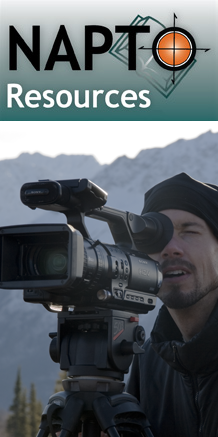
Getting Involved
We have discussed how the Web can be used by the aboriginal people to reach out and share ideas. I found some examples of the younger generation showing pride in their cultural believes.
What Counts:
https://www.youtube.com/watch?v=keczbYdbvpE
I Can Tell You a Legend: The Mink Story – Gwa’sala-‘Nakwaxda’xw Digital Storytelling
https://www.youtube.com/watch?v=iBcTQF5qYFQ




